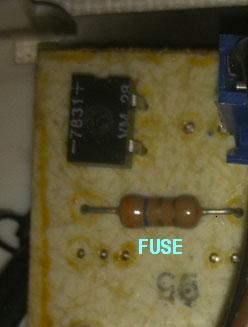alexanderish
Newbie level 4
I broke my new toy.  A vintage Realistic Color Organ, that basically flashed some lightbulbs in response to audio.
A vintage Realistic Color Organ, that basically flashed some lightbulbs in response to audio.
I tore it apart to see if I could swap out the lights, or replace the microphone with a line in. Simple enough.
Unfortunately, early on, I swapped the light and power plugs before plugging it in. There was a pop, a flash, fried electronic smell, and a broken heart.
I am not very knowledgeable about electronics. I don't know what to Google, so I hope I can get help here.
The flash of light seemed to come from the plastic and silver capacitor. On the bottom on the board, the tracks leading from the light pins(which I sent power to) were destroyed. I reconnected the broken bridges, still nothing.
Is there any hope? What part(s) exploded, and will I be able to replace them? Should I test the parts, and how?
Thanks a lot. This is a nice community!
**broken link removed**
**broken link removed**
**broken link removed**
I tore it apart to see if I could swap out the lights, or replace the microphone with a line in. Simple enough.
Unfortunately, early on, I swapped the light and power plugs before plugging it in. There was a pop, a flash, fried electronic smell, and a broken heart.
I am not very knowledgeable about electronics. I don't know what to Google, so I hope I can get help here.
The flash of light seemed to come from the plastic and silver capacitor. On the bottom on the board, the tracks leading from the light pins(which I sent power to) were destroyed. I reconnected the broken bridges, still nothing.
Is there any hope? What part(s) exploded, and will I be able to replace them? Should I test the parts, and how?
Thanks a lot. This is a nice community!
**broken link removed**
**broken link removed**
**broken link removed**
